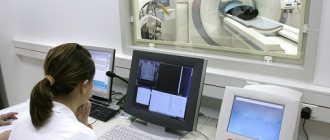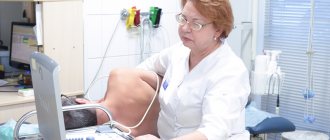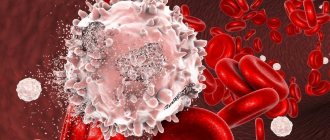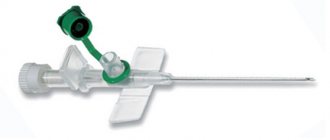Young people who have diseases of the cardiovascular system upon reaching conscription age begin to worry not only about how to cure the disease, but also about the situation regarding compulsory military service. Simply put, when a guy reaches the age of eighteen, the question of whether someone with varicose veins will be accepted into the army becomes more than relevant, since there is a high probability of worsening health conditions due to the conditions of being in the armed forces.
The greatest danger lies in significant physical activity, which increases pressure in the veins due to increased blood circulation and accelerated heart contractions. With varicose veins of the lower extremities, pelvic organs and scrotum, stress on the abdominal muscles and the occurrence of excess pressure in the abdominal cavity are extremely undesirable.
It is important to carefully check the health status of the conscript
Worsening the condition of inflamed veins is not the only side effect during service. For example, a health condition may worsen due to thrombosis or the appearance of trophic ulcers, which will further slow down blood circulation through deformed veins, provoking an even greater change in their morphology and anatomy. As a result, the patient’s condition will become more complicated depending on the progression of the pathology.
Be that as it may, little depends on the desire of the conscript, and in order to receive a deferment or complete release from the army, the young man will have to undergo several stages of medical examination, both at the military registration and enlistment office itself and in hospital departments of cardiovascular diseases.
A person suffering from varicose veins is not subject to conscription for military service if he is diagnosed with signs of clearly defined manifestations of pathologies of the venous system. Otherwise, the young man may be considered partially fit or fit to serve in the armed forces. In each individual case, the approach is strictly individual, and the verdict of the draft commission will depend on the characteristics of the established diagnosis.
Suitability categories
At the first visit to the military registration and enlistment office for conscription, the young man is sent to the first medical examination. If a conscript is diagnosed with a disease that prevents him from serving in the army or creates certain restrictions, the patient is sent to special specialized medical institutions where he will undergo a thorough examination of the disease to clarify or confirm the existing diagnosis.
Based on the required range of diagnostic measures, the doctor makes an appropriate diagnosis, but there is no legal mechanism for calling or deferring. Now the patient, with a confirmed diagnosis, which is indicated on a special form, is again sent to the military registration and enlistment office, as a rule, to the chief therapist.
If there are grounds for removal from military duties, the young man is sent to a specialized military medical commission, where all aspects will be examined and a final verdict will be made on the degree of suitability for military service.
Only a decision of a specialized body can exempt you from military service.
To indicate the suitability of a conscript, there is a special letter scale for classifying diseases regarding the possibility of being in the armed forces. The suitability categories are shown in Table 1.
Table 1. Categories of suitability for military service with varicose veins:
| Suitability categories | Degree of disease |
| A | Absolute fitness for military service. Service is not limited to either region or branch of military service. |
| B | The category indicates the presence of a disease, but blood circulation is not impaired and there are no prerequisites for worsening varicose veins. The conscript is suitable for service, but there are some restrictions on the type of military service and the place (region) of service. |
| IN | The conscript is recognized as having limited fitness in wartime and unsuitable for military service due to the presence of varicose veins with slight deviations in blood circulation. Simply put, in peacetime, a young man is not drafted into the army and is written off to the reserves. He can be drafted into the ranks of the military only if martial law is declared in the country. |
| G | A conscript with this category receives a deferment of 6 months or a year for treatment of the disease, because obvious symptoms indicating the presence of varicose veins were detected, but there were no serious impairments in their functioning. Thus, in this case, the conscript will not receive release from service and, after the prescribed treatment, he will undergo a second medical examination. |
| D | This letter fits into the military ID in case of severe pathologies of blood circulation and the functioning of veins caused by varicose veins. This situation obliges the draft commission to permanently exempt the patient from military service without taking into account the military situation in the country. This means that the guy receives a so-called “white” ticket and will never again be associated with military service. |
Please note that a conscript’s diagnosis of “reticular varicose veins” is not grounds for assignment to category “D” and complete exemption from military service.
Reticular varicose veins of the first stage
What kind of disease?
Varicose veins are a disease that manifests itself in the loss of elasticity of the walls of blood vessels, expansion of their lumen and deformation in the form of tortuosity and the formation of characteristic nodes. Varicose veins are also dangerous due to complications in the form of thrombosis, ulcers, and thrombophlebitis.
The main role in the occurrence of the disease belongs to heredity. But this is only a predisposition, and the trigger is lifestyle - mechanical stress on the veins during prolonged standing. Therefore, varicose veins are always associated with leg veins - the “Schedule of Diseases” does not even consider other options.
A special case is varicocele: varicose veins of the spermatic cord. Every fifth man suffers from it.
Stages of varicose veins of the lower extremities
The pathology is visible to the naked eye
The definition of categories (as can be easily seen from Table 1) depends on the complexity of varicose veins and the level of deformation of the inflamed vessels. Depending on the degree of pathology, there may be stagnant processes in the veins, causing the development of thrombophlebitis, trophic ulcers, the appearance of nodes and calcium accumulations. Read to the end of this article to find out whether people with varicose veins are accepted into the army.
Based on the neglect of varicose veins, there are certain instructions for ranking the disease by stage. The main diagnostic symptoms are listed in Table 2.
Table 2. Stages of the disease:
| Stage | Diagnostic signs | A good example |
| Initial | A person experiences pain or discomfort in the legs after physical work or staying in an upright position for a long time. By the end of the day, your legs may swell. |
|
| First | The symptoms characteristic of the initial stages of the development of the disease remain, but they are supplemented by deformative morphological changes in the condition of the veins, visible to the naked eye: the veins are bent, small vessels are visible under the skin, stars and protruding nodes appear. In addition to the pain, infrequent cramps are added, and a burning sensation is felt in the feet and calves. |
|
| Second | At this stage, the symptoms become very pronounced, this concerns primarily pain and swelling of the lower extremities. |
|
| Third | The most characteristic sign of this stage is that the legs are covered almost over the entire surface with varicose nodes, hypoxia intensifies in the tissues, which leads to changes in the skin, it dries out, peels and changes color. |
|
Note. If it is difficult for a person to move, then this clearly indicates the third stage of varicose veins. There is a danger of the formation of trophic ulcers when the lower extremities are injured.
Thus, in the case when a guy is diagnosed with varicose veins of the second or third degree with chronic venous insufficiency, he should be exempted from military conscription. Persons with initial or first degree ARV are considered eligible, with various reservations.
In this case, there may be a restriction on the choice of type of troops. After passing the commission, the young man receives a military ID with a record of the degree of suitability for serving in the army.
The fitness category is indicated on the military ID
Cost of treatment of venous insufficiency:
| Services list | Price in rubles | |
| Saint Petersburg | Vsevolozhsk | |
| Initial appointment with a phlebologist, stage 2 | 2100 | — |
| Repeated appointment with a phlebologist, stage 2 | 1900 | — |
| Initial appointment with a phlebologist, leading specialist | 2500 | 2500 |
| Repeated appointment with phlebologist, leading specialist | 2300 | 2300 |
| OPERATIONS | ||
| Sclerotherapy (1 session) | 8000 | 8000 |
| Ultrasound-guided foam sclerotherapy for varicose veins (1 session) | 12000 | 12000 |
| Foam sclerotherapy for reticular veins and telangiectasia (1 session) | 12000 | 12000 |
| Puncture and removal of coagulum after sclerotherapy (1 session) | 1500 | 1500 |
| Sclerotherapy for telangiectasia (1 session) | 5000 | 5000 |
| Thrombocentesis of superficial veins | 6000 | 6000 |
| Miniphlebectomy of one zone | 10000 | — |
| Miniphlebectomy of one limb | from 20500 | — |
| Classic phlebectomy | from 40000 | — |
| Endovasal laser coagulation | from 42000 | — |
Do they take you into the army with varicocele?
Varicocele is a varicose vein of the spermatic cord and epididymis. The disease is quite common in men of military age, so when undergoing a medical examination, the doctor is obliged to check the likelihood of the conscript having this disease. Based on what has been written, when considering the topic of whether people with varicose veins are recruited into the army, it is impossible to avoid the problem of varicocele.
An indispensable condition for obtaining a deferment is to conduct a reliable diagnosis on the basis of which a diagnosis will be postulated. As with varicose veins of the extremities, varicoceles are also classified into stages depending on the existing pathology.
The disease has four gradations depending on changes in the pathology of the veins of the pampiniform plexus. In this case, we should talk exclusively about physical diagnostic methods, since the initial stages, in which the veins are not visible as in the photo or cannot be palpated, do not matter in the matter of granting a deferment.
Left-sided varicocele, third degree
Important. In case of varicose veins, the patient can count on a deferment only if the late stages are diagnosed - the second or third.
Please refer to Table 3 for the three clinical stages of varicocele that are important to the military commission. The table does not include a subclinical degree because it allows military service without restrictions and, as a rule, is never diagnosed.
Table 3. Classification of varicocele:
| Varicocele stage | Characteristic symptoms | Diagnostics during examination at the military registration and enlistment office | Granting a deferment |
| I | The patient feels slight periodic pain in the scrotum | Valsalva maneuver | Is not provided |
| II | Pain in the scrotum is distinct, especially after physical exertion. | Palpation, visual. | At the discretion of the medical board, depending on the level of pathology |
| III | The pain syndrome is clearly expressed and constant. There are characteristic visual pathological changes in the scrotum and testicle. The veins are clearly visible. | Visually, palpation. | A deferment or write-off is provided |
Clinical classification
In medicine, it is customary to distinguish several stages of varicose veins of the legs.
- O – symptoms are not detected during examination and palpation.
- 1 – spider veins are noticeable.
- 2 – varicose veins are visible, which rise above the skin and form nodes.
- 3 – protruding veins are found on the surface of the skin, swelling of the legs develops.
- 4 – large pigment spots and venous eczema are noticeable on the skin.
- 5 – all the same signs are observed plus healed ulcers.
- 6 - open ulcers are present on the skin.
Features of deferment
With varicocele, it is very important to determine the true extent of the disease and predict the progression of venous pathology. When considering the issue of deferment, those stages are important when there is a significant danger for the development of male infertility and degradation of the tissue structures of the diseased testicle.
Affected veins after removal during surgery
Second stage varicocele
If there is a second stage at the initial onset of the disease (without relapse), and the condition is assessed as stable, the young man does not face a delay.
In this case, there are three scenarios:
- The guy goes to the army. If the situation worsens, treatment will be carried out in a military hospital with the right to leave, usually for about 30 days. It all depends on the method of operation;
- The young man is given a deferment to eliminate the illness and after recovery he is called up on a general basis;
- If the disease progresses and the likelihood of varicocele progressing to stage 3 is proven, the young man is released from service. However, it is necessary to take into account one significant nuance - release will be provided if the conscript refuses in writing surgical treatment, which the military registration and enlistment office cannot force him to do. After receiving a “white” ticket, no one forbids the guy to undergo treatment.
Third stage varicocele
This stage allows the conscript to be assigned category “B”, which will mean that he is not fit for service in peacetime and has limited fitness for war. This is due to the fact that in the third stage of varicocele the patient is partially limited in performing certain physical activities, and worsening the disease can cause additional harm to health.
In this case, it will be proposed to undergo surgical treatment. If the conscript agrees, then most likely he will undergo additional medical examinations and conscription into the army, since the disease can be completely cured with surgery.
Prevention of chronic venous insufficiency
Mandatory measures for those at risk:
- treat varicose veins and other vein diseases under the supervision of a phlebologist;
- wear compression stockings;
- normalize body weight
- use contrast showers, physiotherapy, therapeutic exercises;
- maintain drinking regime, proper nutrition
- wear stable shoes with low heels;
- reduce exposure to the sun, sauna, bath;
- quit smoking, alcohol
- take medications strictly as prescribed by the doctor, observe the dose, frequency and duration of administration;
- expectant mothers should do an ultrasound of their veins and visit a phlebologist before pregnancy, at least once during pregnancy, and after childbirth.
Phlebologists at our clinic have been working for many years to remove CVI, all its unpleasant manifestations and consequences from your life. Contact your doctor as soon as possible!
The importance of correct diagnosis
Burning and cramping in the calves
You should not rely only on the diagnosis made by surgeons sitting on the military commission. As a rule, this is a quick, superficial examination, and it is clearly not carried out in the interests of the conscript’s health.
Therefore, it is important to insist on conducting a full diagnosis in a hospital setting using laboratory and physical examinations. To do this, you need to visit a phlebologist - a doctor who treats varicose veins.
The most accurate diagnosis can be made only after ultrasound and Doppler sonography. But biochemical blood tests in this case will not be superfluous. Fortunately, the price of such studies is affordable today, and the necessary equipment is available in municipal medical institutions.
It is highly advisable to have a complete understanding of your illness before going through the commission at the military registration and enlistment office. It is important to have a medical card on hand in which the relevant records of the disease will be made.
How to get a degree of fitness
The traditions of national military conscription are that a young man will have to carefully prove to the medical board the presence of a particular diagnosis and the degree of circulatory pathology when it comes to varicose veins.
Since it is impossible to visually determine the exact diagnosis and venous insufficiency, a conscript, if he wants to obtain the right to a deferment, must be in full pain readiness:
- A young man must prepare in advance for the onset of conscription age and the expectation of an invitation to the military registration and enlistment office. More precisely, his parents will have to take care of this to a greater extent. It is advisable to include records of illness for the last few years in the medical card;
- As soon as the guy receives the summons, he needs to undergo all the necessary research himself and update the diagnosis. With the test results and the phlebologist’s conclusion, you can safely go to the military registration and enlistment office;
- At the examination, provide all necessary documents. Typically, the patient will be prescribed additional diagnostics in the medical institution trusted by the military registration and enlistment office.
After the conscript receives confirmation or refutation of the diagnosis, the commission decides whether to grant the right to a deferment. Appropriate notes are made in the personal file and military ID. All the nuances of granting a deferment to patients with varicose veins are described in more detail in the video in this article, which is recommended for viewing on our website.
Ultrasound of the lower extremities allows you to accurately determine the degree of varicose veins
Note. If a conscript has a report of illness from a private clinic, the military registration and enlistment office can double-check the diagnosis by sending the young man to the hospital. And even if the diagnosis is made by a federal medical institution, military registration and enlistment offices constantly require re-confirmation, although such a norm is not prescribed in the legislation.
What to do if a conscript does not agree with the conclusion of the medical board?
Situations often arise when the conscription commission makes a diagnosis with which the conscript does not agree. Typically, young people complain of relief from the severity of the disease. In this case, you must immediately write your claims in writing to the senior military commissar.
Then there is a special procedure provided for in this case. First, the patient will be referred to the city and maybe even the regional medical commission. In the most extreme case, the issue will be resolved in court.
Important. If a conscript does not agree with the decision of the draft commission, he has the right to appeal to higher military jurisdictions. The highest of them is the Military District Military District. If there is still no consensus, the issue will have to be resolved in court.
The law does not provide for forcing a conscript to undergo surgery or any other type of treatment, and he can refuse it by notifying the military registration and enlistment office in writing. This also applies to re-diagnosis. In this case, the medical commission can only make recommendations.
The results of the medical examination of the military registration and enlistment office can be clarified or challenged in the highest ranking commissions









